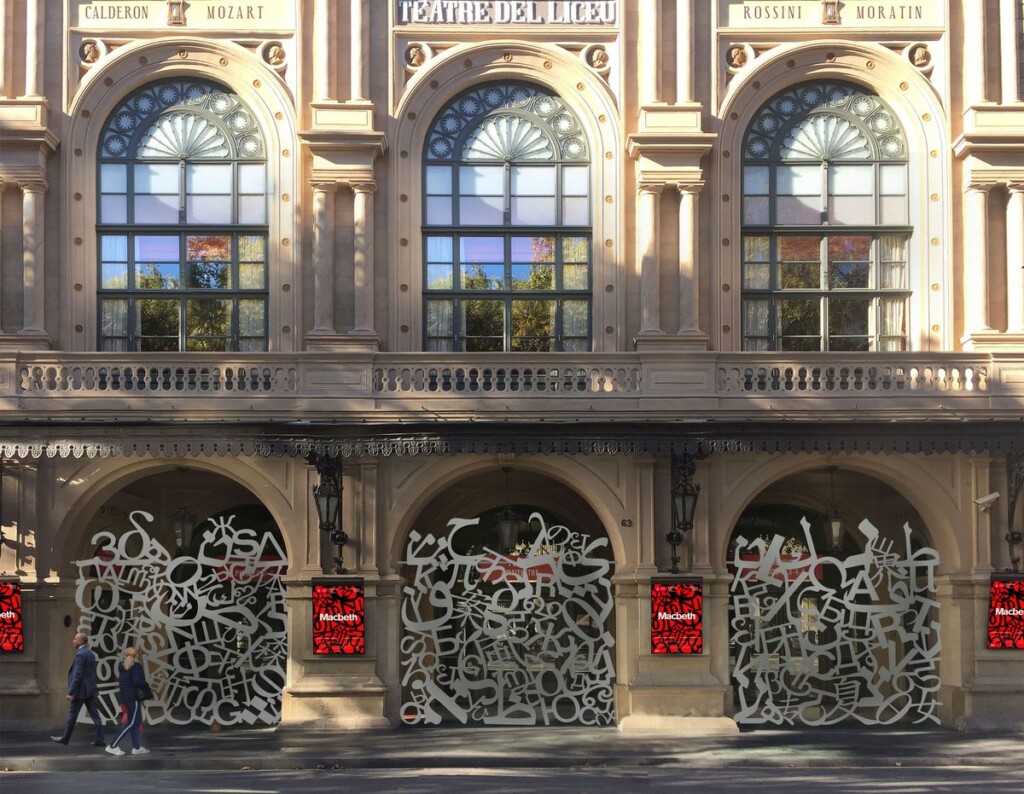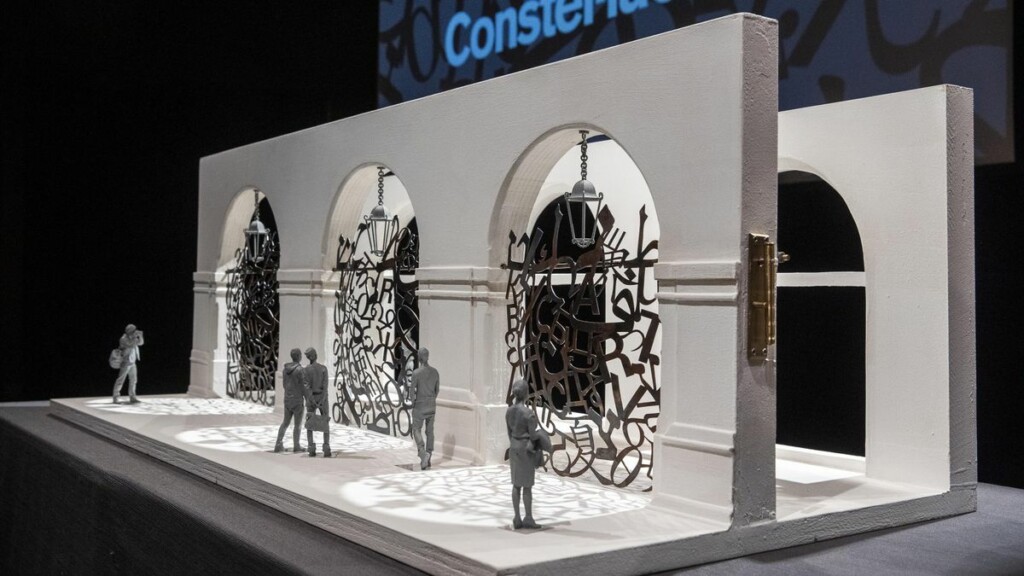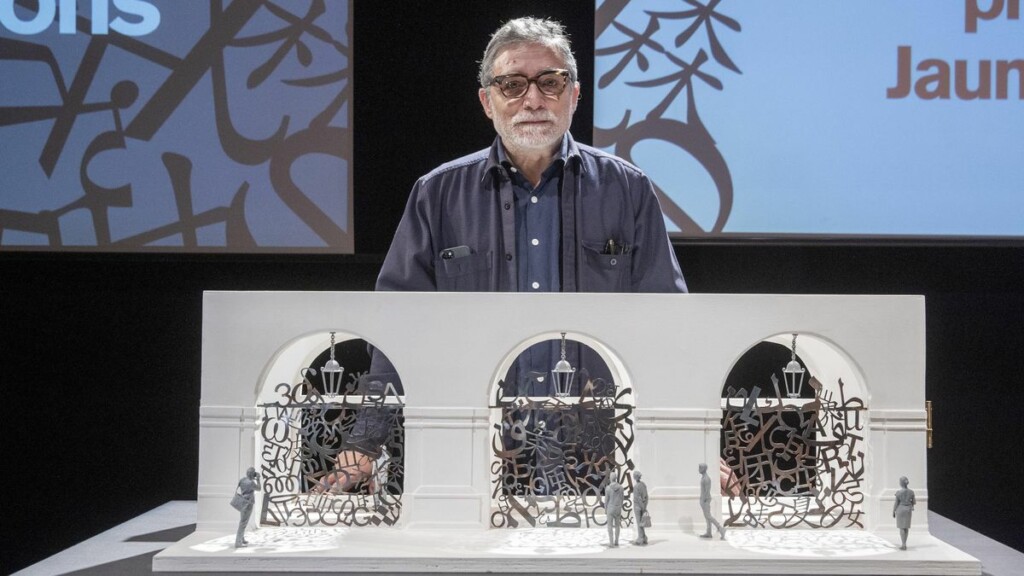- No products in the cart.
Jaume Plensa’s doors are installed at the Liceu in Barcelona
Jaume Plensa‘s stainless steel sculptural doors stand majestically at the entrance to the Gran Teatre del Liceu, marking a new era for this iconic coliseum on Barcelona’s Ramblas. Although their final installation is still in progress, passersby can already glimpse the magnificence of these monumental structures, each weighing half a ton.
On Tuesday, onlookers witnessed how the three imposing trellises designed by the acclaimed Catalan artist, who has closely supervised every stage of this ambitious project, will look. As the September opening date approaches, coinciding with the expected return of activity at the Liceu, these works of art will be temporarily covered with a tarp, further heightening anticipation among citizens and art lovers alike.
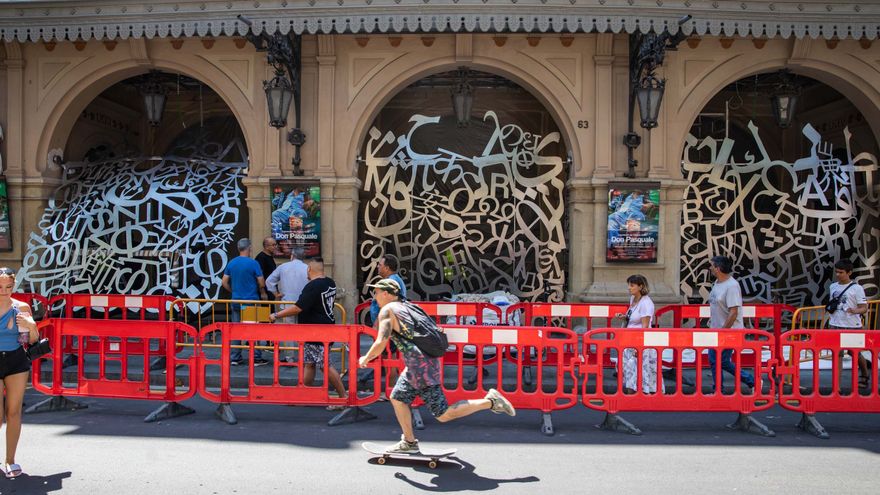
Christened with the evocative name of “Constel·lacions“, these doors represent much more than simple architectural elements. They are a tribute to the Liceu itself, to the music that has filled its halls over the years, to the emblematic grilles designed by Gaudí and to the nearby legacy of Miró, whose mosaic adorns the nearby Pla de l’Os.
But beyond their aesthetic value, the doors also have a practical function: to preserve the safety and integrity of the surrounding space. By preventing people from taking refuge in the arcade at night, these works of art play a crucial role in protecting the environment, as Víctor García de Gomar, artistic director of the Liceu, pointed out in a previous statement. “Sometimes we find ourselves in hell. It is necessary to protect this space so as not to be complicit in things that happen here, from people shooting heroin, people who want to sleep, situations like rape and prostitution“.
Plensa‘s art not only beautifies the Liceu, but also serves as a reminder of the diversity and cultural richness that defines Barcelona’s Ramblas. Made with alphabet letters from diverse cultures, these doors are a symbol of inclusion and respect for the plurality that characterizes this emblematic artery of the city.
In the midst of controversy and discussion about the fate of public space, Plensa‘s doors represent a balance between aesthetics and functionality, between artistic expression and practical necessity. With their placement, it is hoped that the Liceu will not only be a place of artistic excellence, but also a safe and welcoming refuge for all who visit it.
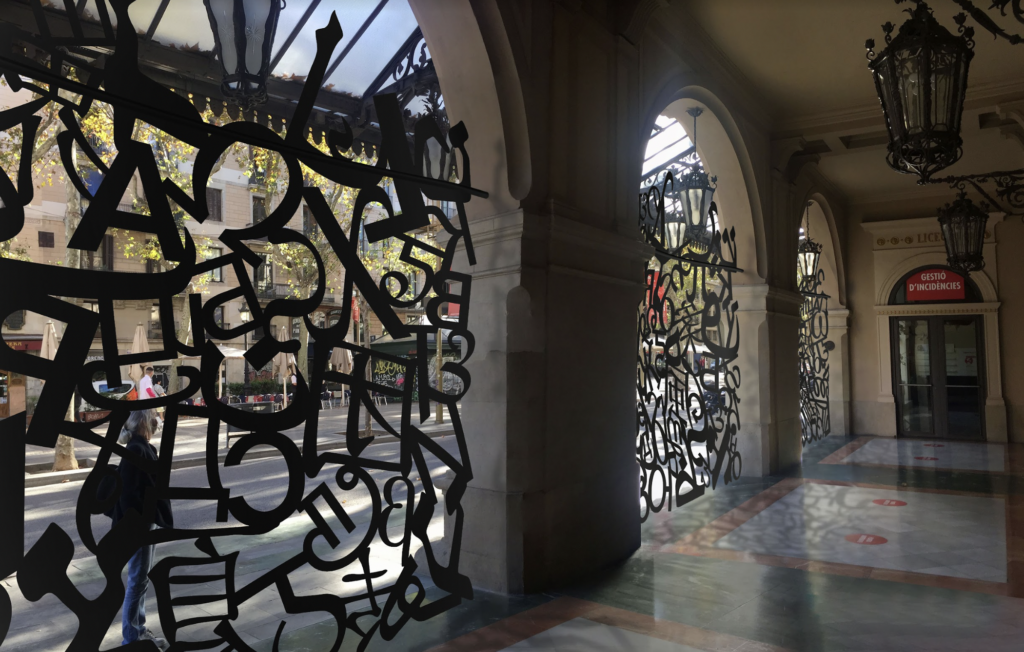
Excerpt from El Periódico and La Vanguardia

























































































